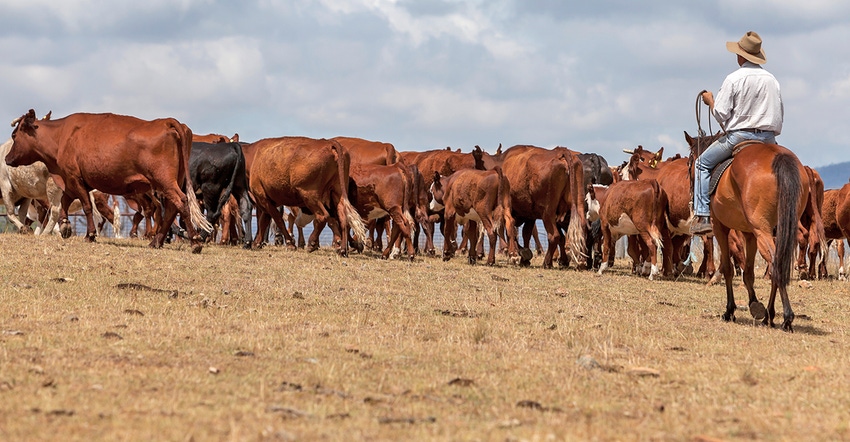September 4, 2017

The drought has exposed holes in the farm bill safety net. Clearly, there is not an adequate protection for cow-calf producers.
Rain insurance doesn’t work well. Some North Dakota ranchers who thought they’d get more coverage this year don’t think the program accurately reflects how dry it is. You can get a downpour on one side the road, and nothing on the other, but the insurance program may say the loss for people on both sides of the road is the same.
There are several other types of insurances for forage and livestock, but none is as widely used as crop insurance.
It’s ironic that we have this problem. Much of the nation’s public and private conservation work on the Great Plains is aimed at preserving or restoring grasslands, but trying to make a living on grass seems to be a lot riskier than trying to make a living on crops. The difference is in value of the insurance that’s available. The answer isn’t to bring down crop insurance to the level of grass, but to bring grass up to crops.
USDA should create a new grass program in the next farm bill. Grass insurance shouldn’t make cow-calf production risk-free. Like with crop insurance, the deductible should be big enough that you will do a lot of things to try to reduce the risk yourself.
I’ve met Dakota cattlemen who aren’t doing too bad this year because they had two years of hay on hand, invested in irrigation years ago, practice intensive rotational grazing, seed and graze cover crops, purposely leave half of their grass each year as a hedge against drought or have worked extra hard to maintain relationships with other farmers and ranchers who can take their cattle during a drought.
All of that should continue. And any cow-calf producer who hopes to be around for 30 to 40 years and pass on their ranch to their sons or daughters should make those things a priority.
Nor should a grass insurance program be without premium subsidy limits. Former Sen. Byron Dorgan used to say if somebody wants to farm the whole county, God bless them, but that doesn’t mean taxpayers should have to help them do it. Grain growers should probably brace themselves for crop insurance premium subsidy limits in the future, too.
Not matter how this year turns out, a farm bill fix in 2018 for cow-calf producers is needed because you can’t count on drought aid coming every year. Dakota ranchers who received hay donations may have been lucky this year. The Northern Plains was the only part of the country suffering extreme drought. Only one disaster was going on when many ranchers were culling cows. Had California still been in a drought, the pain on the Plains might not have been noticed. If Hurricane Harvey had hit Texas when ranchers were being forced to sell cattle, I guarantee you that the ranchers’ plight wouldn’t have gotten any national headlines.
South Dakota and North Dakota ag departments and governors’ offices did a good job organizing drought aid. But I hope they don’t have to get great at it.
State officials should instead be able focus on building infrastructure that cow-calf producers can use to better withstand future droughts. Water development seems to be key. More wells and pasture-watering systems need to be installed. More big pipelines and canals to bring water from the Missouri River to the eastern and western parts of the Dakotas need to be built. The water shouldn’t just be for cities and towns, but for agriculture, too. More ag processing needs to be done in the state, which would increase the feed byproducts available.
North Dakota senator and former governor John Hoeven once said that the oil boom in the Bakken happened partly because the state set the stage for business development and then got out of the way of the oil companies. The same approach should be taken for livestock production and drought mitigation.
You May Also Like




